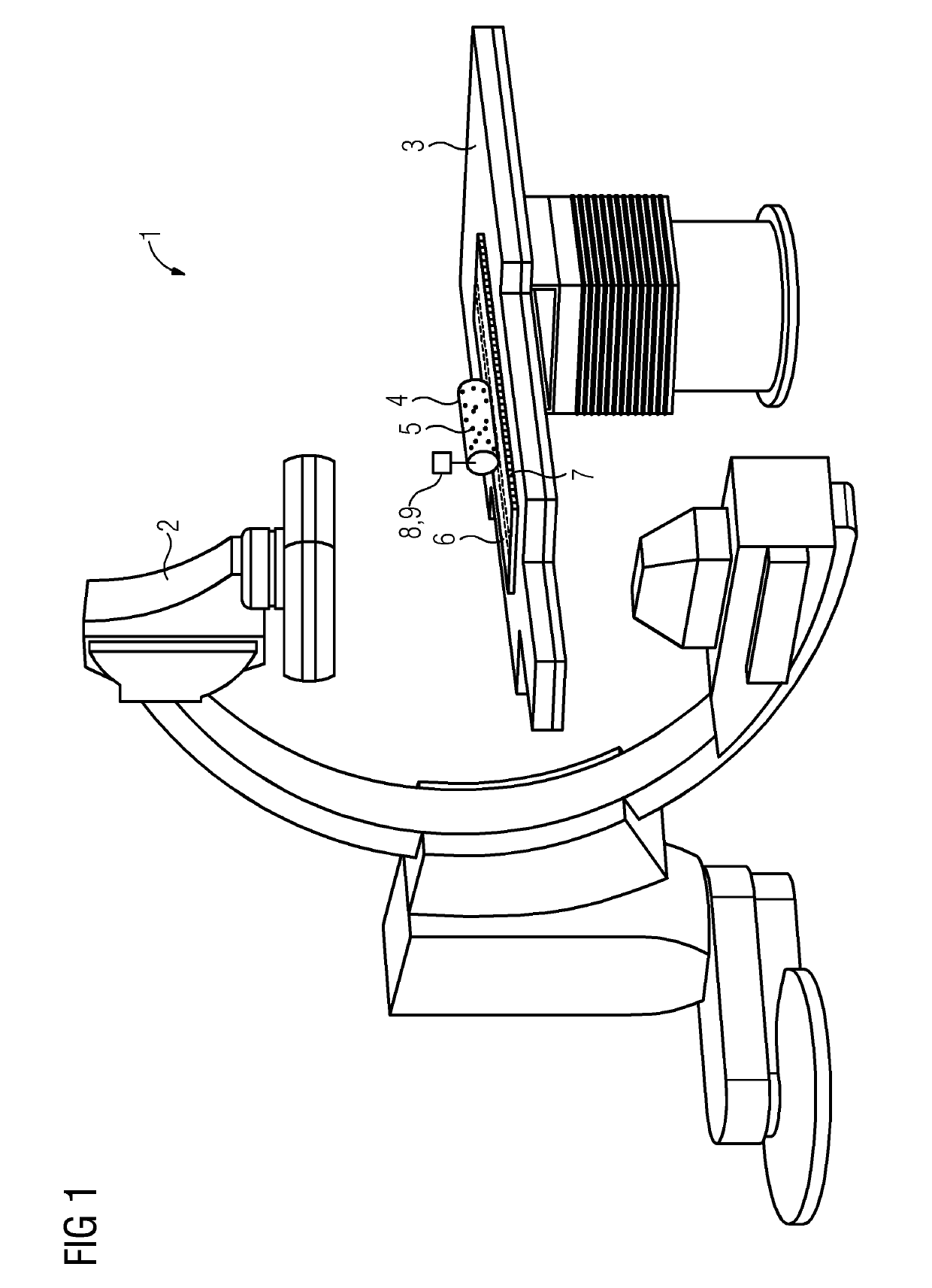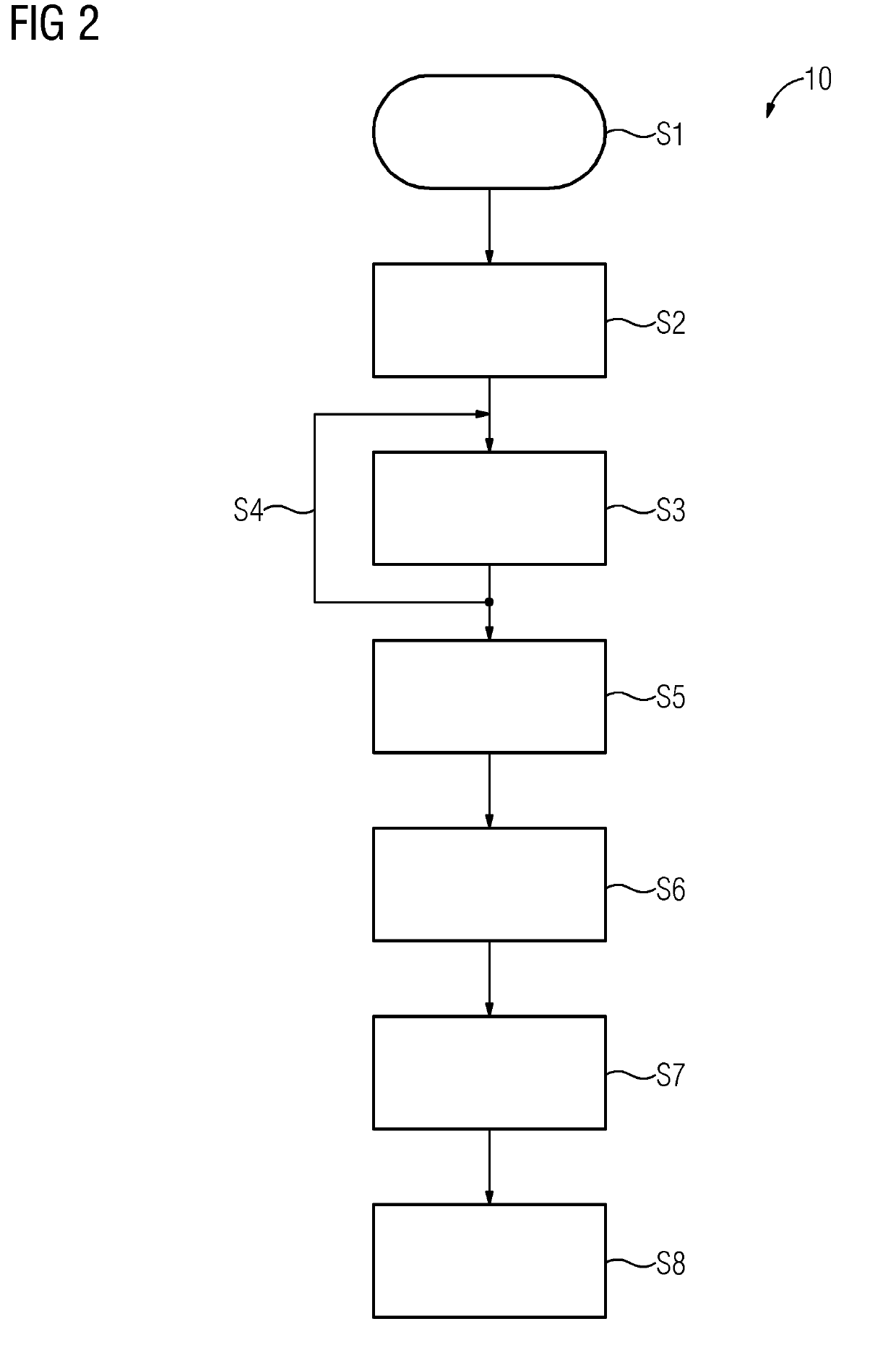Method for calibrating a medical imaging device, method for performing a 2d-3d registration, and system including a medical imaging device
- Summary
- Abstract
- Description
- Claims
- Application Information
AI Technical Summary
Benefits of technology
Problems solved by technology
Method used
Image
Examples
Embodiment Construction
[0038]FIG. 1 schematically shows one embodiment of a system 1 including a medical imaging device 2 that, in the present example, is a c-arm x-ray device. The system 1 or the imaging device 2, respectively, further includes a patient support 3 that is adjustable. Placed on the patient support 2 is an imaging phantom 4 in the form of a cylindrical object including multiple x-ray-visible markers 5 arranged in a pattern to uniquely or unambiguously identify a pose of the phantom 4 in or from x-ray images or corresponding image data obtained using the imaging device 2. Because a geometry of the phantom 4 and the pattern of markers 5 is predetermined and known, the phantom 4 may be used to calibrate the imaging device 2. A corresponding method for calibrating the imaging device 2 will be described with reference to FIG. 2, which schematically shows an exemplary flow chart 10, illustrating multiple process acts.
[0039]The method starts with a process act S1, where the phantom 4 is positione...
PUM
 Login to View More
Login to View More Abstract
Description
Claims
Application Information
 Login to View More
Login to View More - R&D
- Intellectual Property
- Life Sciences
- Materials
- Tech Scout
- Unparalleled Data Quality
- Higher Quality Content
- 60% Fewer Hallucinations
Browse by: Latest US Patents, China's latest patents, Technical Efficacy Thesaurus, Application Domain, Technology Topic, Popular Technical Reports.
© 2025 PatSnap. All rights reserved.Legal|Privacy policy|Modern Slavery Act Transparency Statement|Sitemap|About US| Contact US: help@patsnap.com


